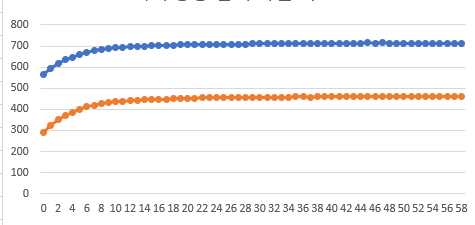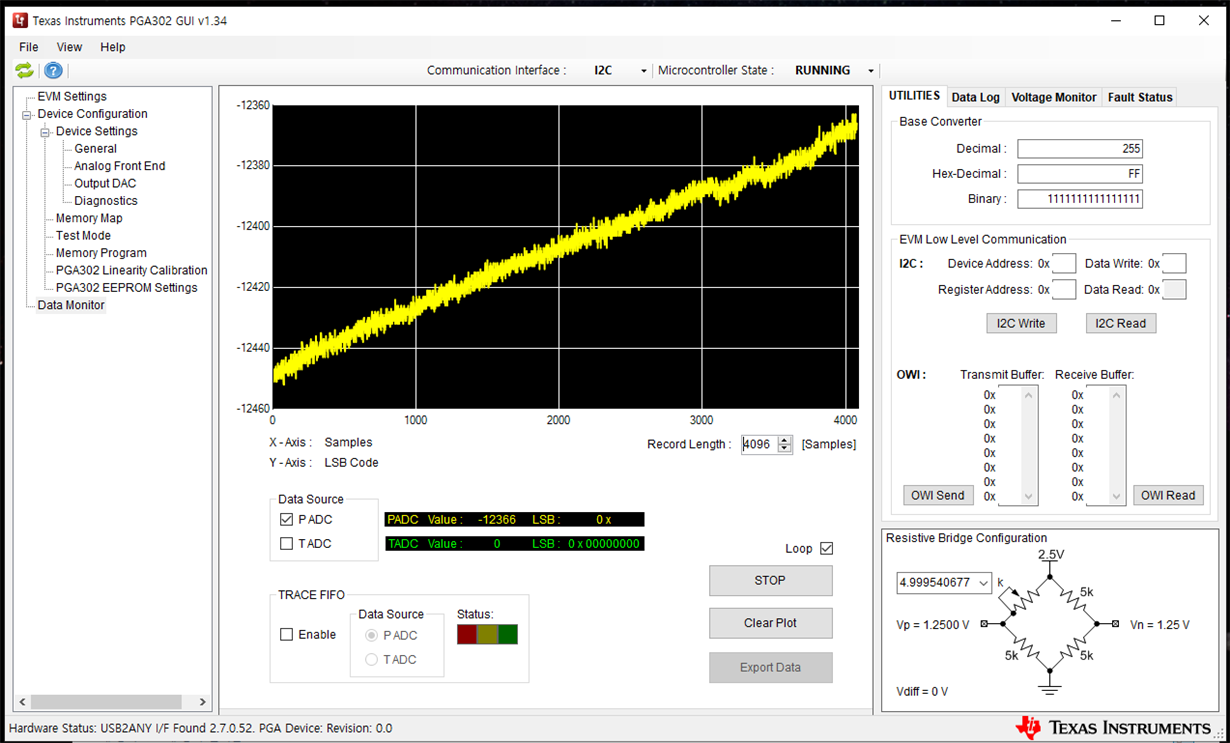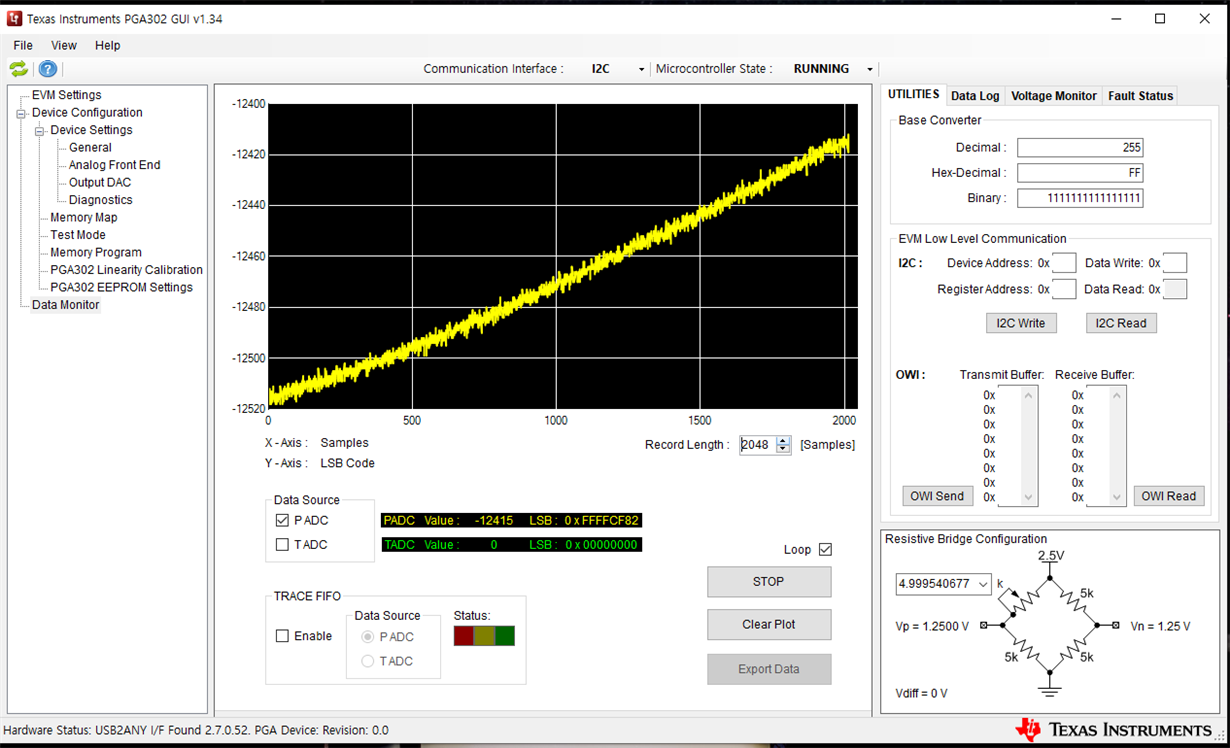Other Parts Discussed in Thread: TMCS1100, TMCS1101
Hello,
I am developing a project using magnets.
Magnet current is amplified by PGA302 and used.
However, there is a problem that the value increases without any action at the point of 0.
I think it is a drift phenomenon over time.
The products I have to develop have to be very precise.
I need a product that can keep the value constant even if it is still using magnets.
In addition, it must be a product that requires automotive certification.
We are looking at TMCS1100, TMCS1101 products.
I am making a product in which mcu works by reading Alnico magnets with a Hall sensor.
I added additional graphs.
The x-axis is time and the y-axis is the AD value read from mcu.
There is a problem that the value keeps rising for about 0~10 minutes on the graph.
Can the PGA302 solve this problem?
I need a product that can keep the value read from the Hall sensor.
Please introduce a product that you are satisfied with.
thanks.




